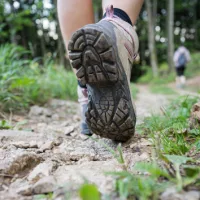
Warmer weather has arrived, and Oregonians are eager to hike, camp, boat, climb and explore. In recognition of Search and Rescue Month, several state agencies are sharing best practices on how to keep outdoor adventures safe for people and Oregon’s scenic landscape.
“Oregon is one of the best places in the world for outdoor adventure, and we want everyone to get outside and discover all our state has to offer,” Governor Tina Kotek said. “We encourage everyone to prepare for their adventures to stay safe and minimize their impact on the communities they visit. Please stay safe and have fun exploring!”
On average, more than 1,000 Search and Rescue (SAR) missions are conducted each year in Oregon, and during the last decade, 99% of people needing SAR assistance lived outside the county where they were rescued. Lack of preparedness was often the common denominator.
“Our SAR teams rescue many folks who are often inexperienced, overconfident and unprepared for the reality of the situation,” said State SAR Coordinator Scott Lucas. “We find people who set out for a hike wearing flip-flops and shorts and carrying no water. They might take an unmarked trail, get disoriented or take a fall, and they could be lost for days.”
Whether traveling for a few hours or a week, people should know their physical limits and plan for activities that won’t exceed their experience. Before heading out, the Oregon Department of Emergency Management recommends the following best practices:
- Know the trail and conditions – research the trail thoroughly and get accurate directions to the trailhead.
- Check weather and any park alerts.
- Check road conditions on Tripcheck.com or call 511.
- Know campfire restrictions at Oregon State Parks as well as public fire restrictions.
- Download maps to a cell phone or print them in case there is no cell service.
- Make a plan and tell someone – make sure they know your route, the exact trail name, possible side destinations and when you plan to leave and return. This information is vital for search and rescue if they need to come looking for you.
- Practice situational awareness – stay vigilant and aware of your surroundings. Keep an eye on trail markers and landmarks so you can provide those details in an emergency. (This includes Oregon Beach Access Numbers on the coast).
- Listen to your body – know your limits when selecting hikes and when you’re on the trail.
- Watch for hazards – if you see signs of bad weather, wildfires, dangerous wildlife activity or other potential hazards, adjust your plans. Never feel bad about turning around early. Have a plan B.
- Stay on marked trails – straying off the path or following social trails increases the risk of getting lost or injured. It also increases the risk of fatal falls.
- Respect trail closures – safety signs and barriers. They are placed there for your safety. Disregarding them can have deadly consequences.
- Exercise caution when crossing streams or navigating steep terrain – never climb on logs or turn your back on the ocean.
- Pack the Day Hike 10 Essentials – include proper equipment, extra food, water and supplies.
- Follow the seven principles of Leave No Trace – minimize your impact.
- Stay in touch – There might not be cell coverage and reception on the trail.
- Enable Wireless Emergency Alerts (WEA) on cell phones.
- If you are using your cell phone, keep the battery fully charged and switch to airplane mode to conserve battery until you need it.
- Consider a personal locator beacon (PLB) like InReach or SPOTS, if you need to call for help.
- Prepare for the weather – layer up, wear appropriate footwear for the terrain and carry an emergency blanket.
- Bring sun protection and lots of water of hot days: Tips for hot-weather hiking.
- Have an emergency kit and cell phone charger in your vehicle.
- Practice water safety – before you go out, plan ahead and check water levels, obstructions, tide information, local regulations and boating access before heading out. The Oregon State Marine Board’s (OSMB) website has a lot of planning resources
- A map of life jacket loaner stations to borrow if you don’t have your own.
- Dress for the water temperature, not the air temperature.
- OSMB recommends people recreate with others so they can provide aid more quickly if the unexpected happens.
- In 2023, there were 13 recreational boating fatalities where 11 victims were not wearing life jackets; seven were paddlers, one in a sailboat, and six were in motorized boats.
The Oregon State Park system is one of the most popular in the U.S. with more than 52 million day-use visits per year, so it’s no surprise it sees an uptick in visitors throughout the summer months. Oregon Parks and Recreation Department (OPRD) recommends that visitors stay on designated trails to stay safe. Following social trails or forging your own increases the risk of getting lost, getting injured or experiencing a fatal fall.
“Even the most beautiful landscapes can be hazardous. We encourage visitors to stay on designated, marked trails to avoid injuries and potentially deadly falls. It’s also important to respect safety signs, trail closures and barriers to enjoy parks safely and responsibly,” said OPRD spokesperson Stefanie Knowlton.”
Oregon State Parks post notices online for park and trail closures as well as tips on how to hike safely.
Oregon’s SAR program supports the broad spectrum of search and rescue operations throughout the state, including coordinating state and federal agencies involved in search and rescue activities and providing on-scene search and rescue efforts when requested. There is no charge for SAR calls, but if community members would like to help support SAR teams, they can purchase a 1-year or 5-year Oregon SAR card. Purchases help fund search and rescue training, equipment and missions across Oregon by contributing to the Search and Rescue Fund. The fund is managed by the Oregon State Sheriffs’ Association.
As always, in case of emergencies, dial 9-1-1; most Oregon counties also accept texts to 9-1-1.















